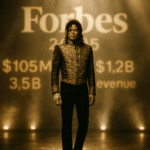A new power‑broker is quietly rewriting the rules of American media. The Ellisons, Larry and his son David, are now emerging as a dynasty that could rival the Murdochs, not by building newsrooms from scratch but by folding entertainment, social media, and algorithmic control into a single structure.
From Tech Mogul to Media Architect
Larry Ellison built his reputation in databases and cloud computing, not broadcasting. Yet in 2025 he is fronting moves that may redefine how Americans consume content. His son David, via Skydance Media, recently merged with Paramount Global in an $8 billion transaction, creating a combined entity, Paramount Skydance, with David as chairman and CEO. The Ellison family’s capital commitment was critical: Larry and his family are investing roughly $6 billion toward that merger. In parallel, Larry is spearheading a bid for TikTok’s U.S. operations, rumored in some reports to be as high as $14 billion, with the promise that Oracle will host data, reengineer algorithms, and assert control over the platform’s operations.
Through these twin thrusts, in entertainment and social media, the Ellisons are assembling reach across film, television, news, and digital virality. That convergence makes their project more than a business play; it is a bid for structural influence over public attention.
Implications for Media Power and Pluralism
A central implication is the risk of concentrated narrative control. If one family holds sway over CBS, MTV, streaming services, and a social media algorithm fed by 170 million Americans, the potential to channel discourse, intentionally or inadvertently, becomes real. Critics warn that such aggregation recalls old media barons: the roles and voices that once competed in printing, radio, and TV risk being streamed through a single conduit.
The Ellisons’ political positioning heightens the stakes. Larry Ellison has deep ties to Republican circles and is occasionally cast in analysis as a “shadow power broker” within the Trump orbit. Given that acquisition narratives often carry editorial direction, the possibility of nudging or curating public sentiment cannot be ignored. Especially when media consolidation and algorithmic influence meet, the boundaries between private capital and public opinion risk blurring.
Regulatory scrutiny will be intense, particularly over antitrust and broadcast licensing. The Skydance‑Paramount merger already drew conditions from U.S. regulators. Any future bid for Warner Bros. Discovery, which houses CNN, HBO, and major studios, is already drawing warnings from prominent figures like Senator Elizabeth Warren, who deems it a “dangerous concentration of power”, according to Reuters. Media plurality law, competition policy, and public trust all hang in the balance.
Challenges of Execution and Market Response
The Ellisons’ vision faces practical hurdles. Integrating legacy media with new tech demands reconciling cultures, revenue models, and audience habits. David Ellison has framed Paramount Skydance as a “media and tech” company with AI-powered recommendation engines, but legacy debt, content costs, and market competition (from Netflix, Disney, Amazon) loom large. Operating TikTok under U.S. control also poses execution risks: recreating or securing its algorithm and trust infrastructure apart from ByteDance is a complex technical, legal, and geopolitical challenge.
In financial markets, the mere prospect of further consolidation already moves stock. After reports that Paramount Skydance may bid for Warner Bros. Discovery, Warner’s shares jumped nearly 30 percent and Paramount’s 7 percent. Yet that bounce does not guarantee the bid succeeds. The move leans on deep capital backing and regulatory approval.
Going Forward: What the Ellison Dynasty Means
If successful, the Ellisons will not simply join the roster of media families, they may unsettle the playbook. They are stitching together a model where tech, content, and algorithmic platforms belong to one umbrella. That model could alter how stories surface, what perspectives find amplification, and who holds the key to distribution. At a time when the public debates the power of Big Tech, algorithmic bias, and concentrated media ownership, the Ellison project arrives with profound implications.
For rival media groups, regulators, and civil society, the challenge will be to guard pluralism and transparency in a landscape where data and content increasingly fuse. The Ellisons may yet prove that the future of media is less about legacy pipelines than about who controls the wires, and the code, behind those pipes.













